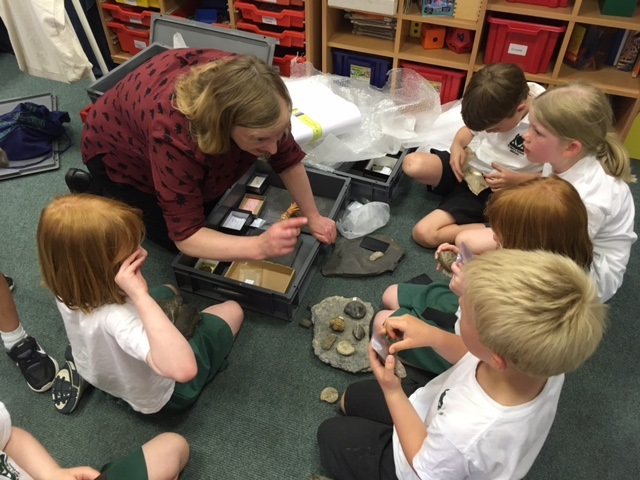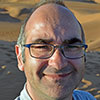Sarah Stewart, Assistant Curator of Palaeobiology, and I were recently invited to give a presentation and workshop to some very keen students at St Mary’s School in Melrose. We were invited by two classes, Form 2 and Form 5, and our visit aimed at complementing the science topics the classes have already been studying: Form 2 – Fossils, and Form 5 – Evolution.

We started with a presentation on fossils and tried to cover general questions such as ‘What is a fossil?’, ‘Where can you find them in Scotland?’, and ‘How do they form?’. The pupils in Form 2 (equivalent to P2-3) listened very carefully, but while we were giving the presentation we tried to engage them by asking questions. After the presentation, a round of questions kept us busy for quite a while. It was interesting to see that most of the pupils had a very good idea of what fossils are.
The children were then split into two groups and had the opportunity to handle a selection of specimens from the palaeobiology education collection: ammonites, bivalves, brachiopods, trilobites, crinoids, fossil shark teeth, and more from a wide range of localities and ages, although with an emphasis on Scottish fossils. We also brought some hand lenses for a closer look. There was a buzz of excitement and exclamations of ‘Wow, look at that!’, ‘What’s this?’ and ‘I wonder how old this one is?!’

Then it was time to pack the specimens up again and meet the second class, Form 5 (equivalent to P5-6). Here we started with a presentation on evolution and the ideas that helped shape the theory, giving many examples from the fossil record (for example the evolution of horses, from small-sized animals with four toes on the forefoot to today’s larger sized animals with one toe on the forefoot). The pupils were fascinated to learn that it is now widely thought that theropod dinosaurs were feathered, and from skeletal comparisons, that their closest living relatives are birds. Again, after the talk and the many questions sparked by their enthusiasm, we showed them some fossils related to the topic. In particular, we brought a series of four models of horses’ forefeet from fossil to modern that clearly showed the transition between the many-toed animal to the one-toed modern horse. The pupils were very interested in this topic as many of them do horse riding as a hobby.
Visits to schools such as these are very interesting and the pupils from both classes asked very thoughtful questions. It is always a great opportunity to open up our collection to such keen young scientists and I would like to thank the teachers at St Mary’s School who kindly welcomed us. We were delighted to learn that we will be re-invited next year for another session.
